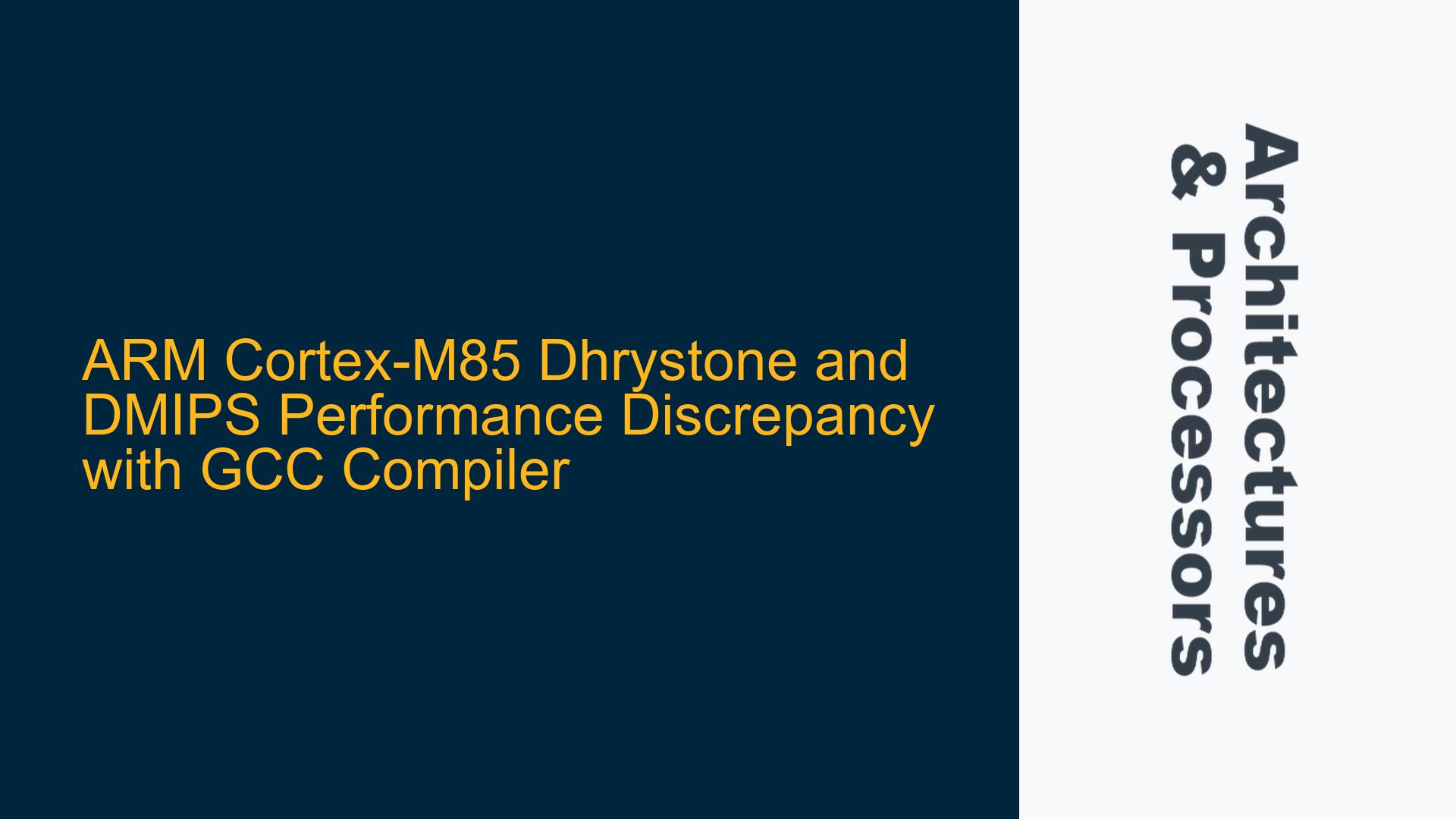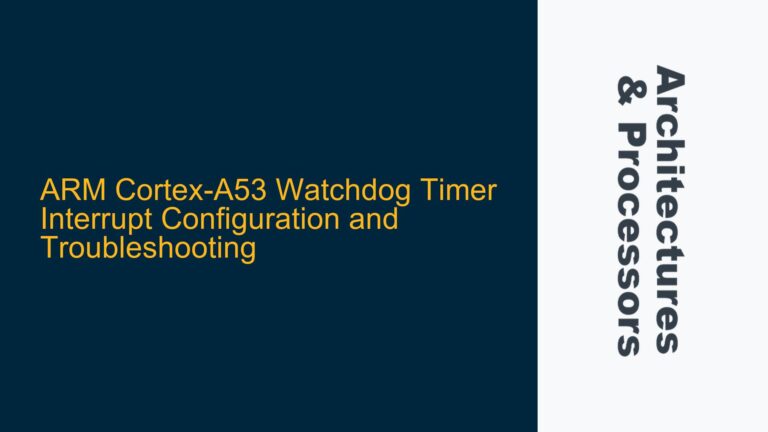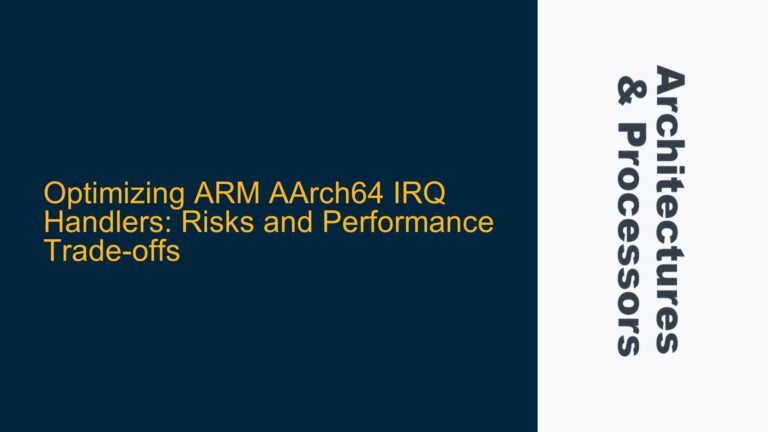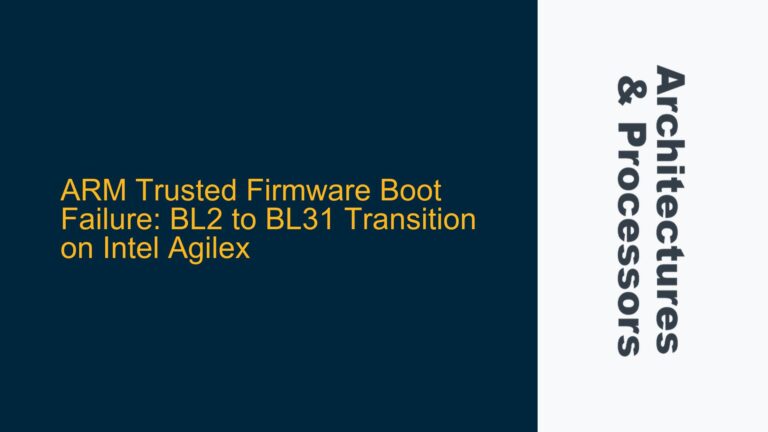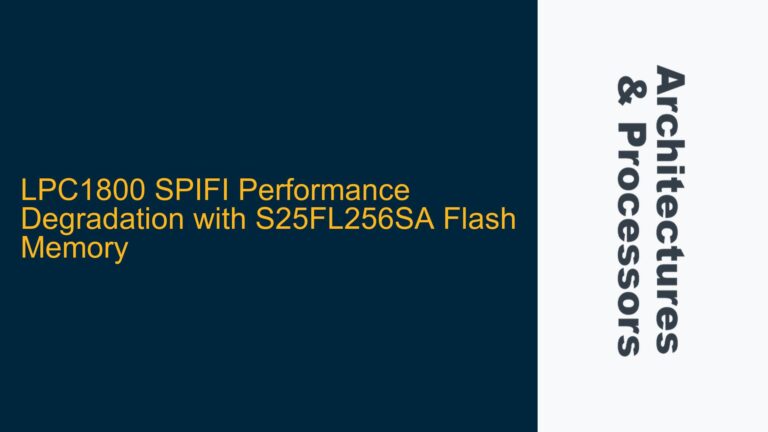ARM Cortex-M85 Dhrystone Benchmark Performance Shortfall with GCC
The ARM Cortex-M85 processor is a high-performance microcontroller core designed for embedded applications requiring robust computational capabilities. It is part of the Cortex-M series, which is widely used in real-time systems, IoT devices, and other embedded applications. One of the key metrics used to evaluate the performance of such processors is the Dhrystone benchmark, which provides a standardized measure of integer processing power. The Dhrystone benchmark results are often expressed in DMIPS (Dhrystone MIPS), a derivative metric that normalizes performance relative to a reference machine.
However, a significant performance discrepancy has been observed when running the Dhrystone benchmark on the Cortex-M85 using the GCC compiler. Specifically, the measured DMIPS values are less than half of those claimed by ARM when using the ARM Compiler. This discrepancy raises concerns about the efficiency of the GCC compiler in optimizing code for the Cortex-M85 architecture and highlights potential issues in the hardware-software interaction.
The Dhrystone benchmark is particularly sensitive to compiler optimizations, as it involves a series of integer operations, string manipulations, and control flow constructs. The performance gap between the ARM Compiler and GCC suggests that the latter may not be fully leveraging the architectural features of the Cortex-M85, such as its advanced pipeline, branch prediction, and memory subsystem. This issue is critical for developers relying on GCC for their projects, as it directly impacts the perceived performance of their applications.
Compiler Optimization Differences and Architectural Underutilization
The performance discrepancy between the ARM Compiler and GCC on the Cortex-M85 can be attributed to several factors, primarily revolving around compiler optimizations and architectural underutilization. The ARM Compiler is specifically tailored for ARM architectures, incorporating advanced optimization techniques that are finely tuned for the Cortex-M85. In contrast, GCC, while highly versatile, may not fully exploit the unique features of the Cortex-M85, leading to suboptimal code generation.
One of the key areas where GCC may fall short is in instruction scheduling and pipeline utilization. The Cortex-M85 features a dual-issue superscalar pipeline, allowing it to execute multiple instructions per clock cycle under optimal conditions. The ARM Compiler is likely better at identifying parallelizable instructions and scheduling them to maximize pipeline throughput. GCC, on the other hand, may not be as effective in this regard, resulting in lower instruction-level parallelism and reduced performance.
Another critical factor is the handling of branch prediction. The Cortex-M85 includes a dynamic branch predictor to minimize the performance penalty associated with conditional branches. The ARM Compiler may generate code that aligns more closely with the predictor’s behavior, reducing branch mispredictions. GCC, however, might not fully account for the predictor’s characteristics, leading to higher misprediction rates and increased pipeline stalls.
Memory access patterns also play a significant role in performance. The Cortex-M85 features a tightly coupled memory (TCM) interface and a cache hierarchy designed to minimize latency. The ARM Compiler likely optimizes memory accesses to take full advantage of these features, reducing cache misses and improving data throughput. GCC may not be as effective in optimizing memory accesses, leading to higher latency and reduced performance.
Finally, the use of advanced SIMD (Single Instruction, Multiple Data) and DSP (Digital Signal Processing) instructions can significantly impact performance in certain workloads. The ARM Compiler may be more aggressive in utilizing these instructions, whereas GCC might rely more on generic integer operations, resulting in lower performance for computationally intensive tasks.
Enhancing GCC Performance on Cortex-M85 through Compiler Flags and Code Optimization
To address the performance discrepancy between the ARM Compiler and GCC on the Cortex-M85, developers can take several steps to optimize their code and compiler settings. These steps involve both adjusting compiler flags and making targeted code modifications to better align with the Cortex-M85’s architectural features.
First, it is essential to explore and enable the appropriate compiler optimization flags in GCC. The -O2 and -O3 flags are commonly used to enable general optimizations, but additional flags can be used to target specific architectural features. For example, the -mcpu=cortex-m85 flag ensures that GCC generates code specifically optimized for the Cortex-M85. Additionally, the -mfpu=fp-armv8 and -mfloat-abi=hard flags enable hardware floating-point support, which can improve performance for floating-point-intensive workloads.
Another critical flag is -funroll-loops, which can enhance performance by reducing the overhead of loop control. However, this flag should be used judiciously, as excessive loop unrolling can increase code size and potentially degrade performance due to cache effects. The -ffast-math flag can also be beneficial for workloads involving floating-point operations, as it relaxes some of the strict compliance rules, allowing for more aggressive optimizations.
In addition to compiler flags, developers should consider manual code optimizations to better leverage the Cortex-M85’s features. For instance, restructuring code to minimize branch mispredictions can significantly improve performance. This can be achieved by reducing the complexity of conditional statements and using lookup tables or predication techniques where applicable. Similarly, optimizing memory access patterns to improve cache utilization can yield substantial performance gains. This involves aligning data structures to cache line boundaries, minimizing cache pollution, and prefetching data where possible.
For computationally intensive tasks, developers should consider utilizing the Cortex-M85’s SIMD and DSP instructions. While GCC may not automatically generate these instructions, they can be explicitly included in the code using intrinsic functions or inline assembly. This approach requires a deep understanding of the Cortex-M85’s instruction set but can result in significant performance improvements.
Finally, profiling and benchmarking are essential tools for identifying performance bottlenecks and guiding optimization efforts. Tools such as ARM’s DS-5 Development Studio or open-source alternatives like Gprof can provide valuable insights into where the code is spending most of its time and where optimizations can have the most impact. By iteratively profiling and optimizing, developers can progressively close the performance gap between GCC and the ARM Compiler on the Cortex-M85.
In conclusion, while the performance discrepancy between GCC and the ARM Compiler on the Cortex-M85 is significant, it can be mitigated through careful optimization of compiler settings and code structure. By understanding and leveraging the Cortex-M85’s architectural features, developers can achieve performance levels closer to those claimed by ARM, even when using GCC. This process requires a combination of technical expertise, profiling, and iterative optimization but is essential for maximizing the potential of the Cortex-M85 in embedded applications.
